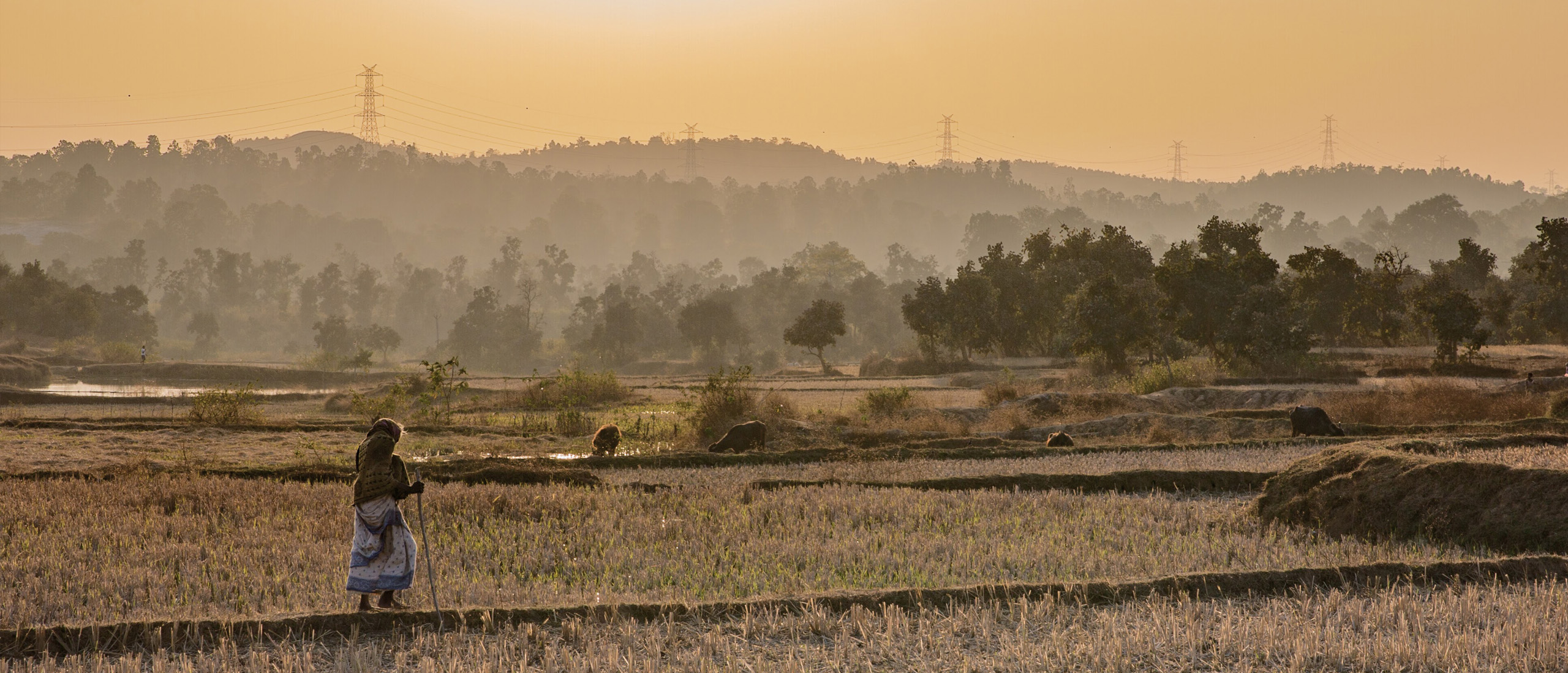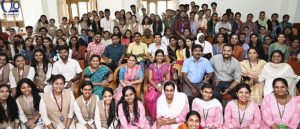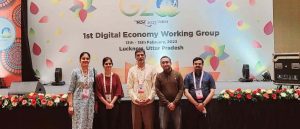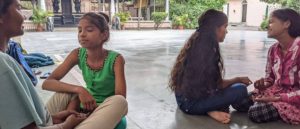Renowned traditional medicine and allopathic health experts came together for a lively webinar with the Integrated Holistic Health Working Group and discussed various forms of alternative medicine and their potential within the global health community.
Speaking from the fields of Ayurveda, Homeopathy, Unani, Naturopathy, and more, they explored the relationship of alternative medicine and allopathic medicine in the world today.
There are complexities and benefits of alternative forms of medicine, as well as key questions such as: “Why are people tentative to embrace alternative medicine? Where is this gap in understanding stemming from? And how can professionals in the health community bridge this gap for the betterment of society as a whole?”
The goal was for people to derive benefit from this initial conversation surrounding the integration of alternative and allopathic medicine in a meaningful way.
Mr. Rajiv Vasudevan – Ayurveda IM, Founder & Chief Executive Officer, AyurVAID Hospitals
Civil society, environment, sustainable development, gender equality, human rights, and social economic and climate justice are indivisible. However, the current public health system is driven by a biomedical paradigm that looks only at physical health/disease rather than at the health of individuals and communities.
There is a need for a shift in paradigm from individuals as ‘passive beneficiaries’ to communities actively involved in the process, as well as from a ‘drugs and vaccines approach’ to ’empowerment, enablement, autonomy’.
Care should be viewed from all spectrums of live, including pre-conception, conception, delivery, birth, lifespan – from cradle to grave. So there is a need to address diet, lifestyle, mental factors, and external factors such as air/water pollution, stressors, occupational health, and comorbidities.
In Ayurveda, there are the Panchanidhananas – five aetiologies well defined 3000 years back, metabolism and inflammation – agni and ama – core diseases/pathological mechanisms which are aggravated by inappropriate diet and lifestyle.
By looking at health as swastia – positive health – as opposed to disease and pathogenesis, we can empower communities, as opposed to being dependent on blood tests and the ‘blind rush’ to taking laboratory tests to define health.
Ayurveda brings a ‘personalised intervention’ in terms of diet, lifestyle, medicine, therapy and mental health counselling. India’s 2017 National Health Policy is going for revision. In general, CSOs in healthcare today do not include traditional medicine, but through C20, India can take the lead.
Dr. Geethakrishnan – Ayurveda, Ayurveda Physician, Technical Officer, World Health Organisation (WHO), Geneva
Many possibilities emerge by integrating traditional medicine into clinical practice. There is a large spectrum of research and evidence coming out in different fields for traditional medicine in areas such as mental health, health-related nutrition, old age.
There are three basic areas in global public health and clinical practice where traditional medicine can help with the United Nations’ Sustainable Development Goals for 2030:
1) Improving accessibility for everyone, leaving nobody behind.
2) Economic benefits of utilising traditional medicine, reducing costs and resources required.
3) Managing the increasing old age population. Old age care should not start in old age. Traditional medicine has the right kind of knowledge to help our populations age well and healthily.
As a society, we can also lead self-healthcare by providing people with the information they need to take responsibity for their own health.
Dr. Sujatha V, Siddha, Sociologist, Centre for the Study of Social Systems, JNU
In this medical pluralism, we need to address how the systems can coexist and support each other. In America and other Western countries, people already started moving toward complementary and alternative medicines three decades ago.
There has been a general assumption that traditional medicines are more suitable for chronic and long-term diseases, but that fevers and infectious diseases are best treated under the control of biomedicine. Traditional systems have also mostly been in the private sector.
But, the Covid pandemic led to many South Asian and African countries turning back to traditional medicine recipes. The Government of India advocated Ayush protocols for Covid.
In another example, there was a Siddha Medicine public health intervention in Tamil Nadu during a 2009 Dengue outbreak. The Government called on Siddha experts to find a safe, toxicity free remedy that can be widely distributed to children. Nilavembu Kudineeri (7 ingredients in dry powder form and mixed in boiled water) was widely distributed.
During Covid, Siddha experts mass distributed a Kabajura Kudineer recipe free of cost, as well as producing it by government traditional medicine factories and charging ₹10 per dose. This received widespread social acceptance and results are being published.
The theory behind traditional-based medicine is the ‘host-based approach’ (rather than biomedical germ-based).
However, traditional medicine should not be made into products or commodities only for people who can afford them. It must be widely available. It also has potential for handling pandemics in decentralized, sustainable ways.
Dr. Madhulika Banerjee, TM, Public Health, Professor at the Department of Political Science at the University of Delhi
Ayush (Ayurveda, Yoga and Naturopathy, Unani, Siddha and Homeopathy) and are the six Indian systems of medicine prevalent and practised in India and some of the neighbouring Asian countries, with very few exceptions in some of the developed countries.
These systems are not just a poor person’s option. We should look at Ayush as an option to use local resources and achieve self-reliance. To support accessibility to Ayush systems, we need not only the industry, but also mobilise people at the local level to understand.
To achieve this, we need to understand what resources they have and how they can be used for addressing a range of health issues. Work is already being done by thousands on the ground and this is not just some utopian ideal.
By exporting Ayurveda and traditional systems to the rest of the world, we share the principles of Ayush, and each country can adapt the concepts as per its own ecology, plant resources, constitution of its people, and nature in which they live. They can create their own Ayurveda.
Europe has systematically dismantled its traditions, but there are many places still preserving the knowledge. We should build confidence in traditional knowledge and the Indian government can share its own research into the Ayush systems.
Dr. Ghazala Javed, Unani, Scientist IV, Central Council for Research in Unani Medicine, Ministry of AYUSH, Govt. of India
February 11th was Unani day and a successful two-day international conference was held. Unani medicine is a system that passed through many countries before coming to India around the 8th century.
India is the world leader of Unani medicine with a wide network of quality educational institutions, comprehensive healthcare facilities, state-of-the art research institutions, and quality drug manufacturing in place.
Other countries are looking to India to share experience in the propagation of Unani medicine, and the system is being scientifically validated through clinical research. Unani medicine is also found in Bangladesh, South Africa, Pakistan, Sri Lanka, Tajikistan, UAE and China.
The Central Council for Research in Unani Medicine si in the Ministry of AYUSH. The WHO has published documents for training and practice of Unani medicine and defines the minimum criteria for establishing practice, including technical requirements, regulation, and training, and standard terminology.
Unani medicines like Khamira Marwareed and Joshanda are being popularised, and the UN declared 2023 as the Year of Millets, to create awareness of the dietary benefits of the grain. Millets are also good for the environment, with low water input requirements.
Just like other traditional systems, Unani medicine has concept of diet therapy and prevent joint pain and arthritis. AYUDH has launched an app with a questionnaire which analyses temperament and gives dietary advice.
Dr. Nirmal Gosh, Homeopathy and former head of Research in Homeopathy, at the Homeopathy Medical Education, Department of AYUSH, Government of Kerala
We need to take a policy approach of pluralism in medicine. Homeopathy is not a traditional system. It is a modern system (only 200 years old). During the pandemic, the Government of India issued guidelines to implement Ayush interventions. Delay in homeopathy implementation during the pandemic was due to the lack of documentation, which would help it to emerge in the ‘evidence-based’ race. Now we have received legal permission to do trials in homeopathy for Covid in Kerala. We can expect more catastrophic public health issues in future if we do not act upon the imbalance between humans and the environment.
Dr. Apar Saoji Rao, Principal, School of Yoga and Naturopathic Medicine, S-Vyasa
From the origin of the yoga and naturopathy system, yoga is to understand your internal nature and naturopathy is aligning yourself with the laws that govern nature. Today, the health problems faced by people across the world are mainly lifestyle disorders. They are non-communicable diseases.
Lifestyle disorders occur due to a departure from the nature of our own self. We are deviating from our natural alignment through improper diet, lack of exercise, psychological stress (yoga says ananda is our natural state).
A lot of research in lifestyle medicine, including yoga and naturopathy, is happening across the world. It is needed in order to meet evidence-based standards. In China and Japan, Chinese Medicine is integrated together with conventional allopathic medicine.
India is also trying to integrate the systems, but needs to create awareness with the consultants of conventional medicine about Ayush as a whole. This is where evidence will play an important role.
There are studies happening in yoga, for example oncology studies in Bangalore and in the US as part of a National Institutes of Health (NIH) study at the MD Anderson Cancer Center on breast cancer. There is evidence being generated that the biomedical approach is very fragmented, whereas Ayush systems are holistic.
The major areas of focus for Ayush are prevention and rehabilitation. With yoga and naturopathy, this is simple, self-care once the patient is trained and is cost-effective. However, the regulation and standardisation of yoga and naturopathy are major challenges, due to the diversity of its practice.
Dr. Vivek Nambiar, Allopathy, IM, HOD & Professor of Stroke Medicine, Amrita Hospitals, Kochi
Treatment should be personalised to the patient. When treating a particular disease, there will be several components that we may have missed, especially if we are concentrating on only certain aspects of the disease. There is a role for complementary and traditional medicines.
We need to strengthen these practices and systems, but for this evidence is required. This is what we are trying to do in Amrita Institute (ICMR). Data needs to be provided to gain acceptance from people. One of the advantages of modern medicine is the continuous research and efforts towards modifying treatments. Ongoing process of evidence-based change.
There is a treasure of knowledge to be explored and brought out through proper research into traditional practices. We are doing a trial on a sort of martial art prevalent in Kerala, which is also used for curing fractures and other musculoskeletal ailments. Very effective conventional method of treatment, but it is not known to the modern generation.
It is a good move from the Government of India to fund this research. Practitioners should be open to research and innovation, to produce more data. There is scope and role for all the systems in holistic care. Maybe not for the acute phase, but definitely for the chronic phase and rehabilitation.
More research means people can make informed choices about their treatment. Integration could be either integrated medicine or independent systems where patients can choose their own line of care.




